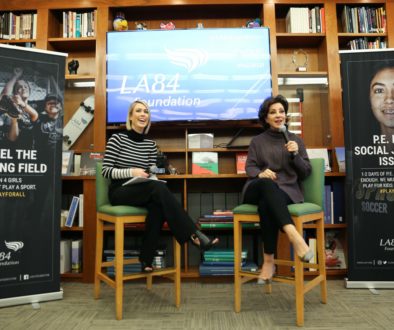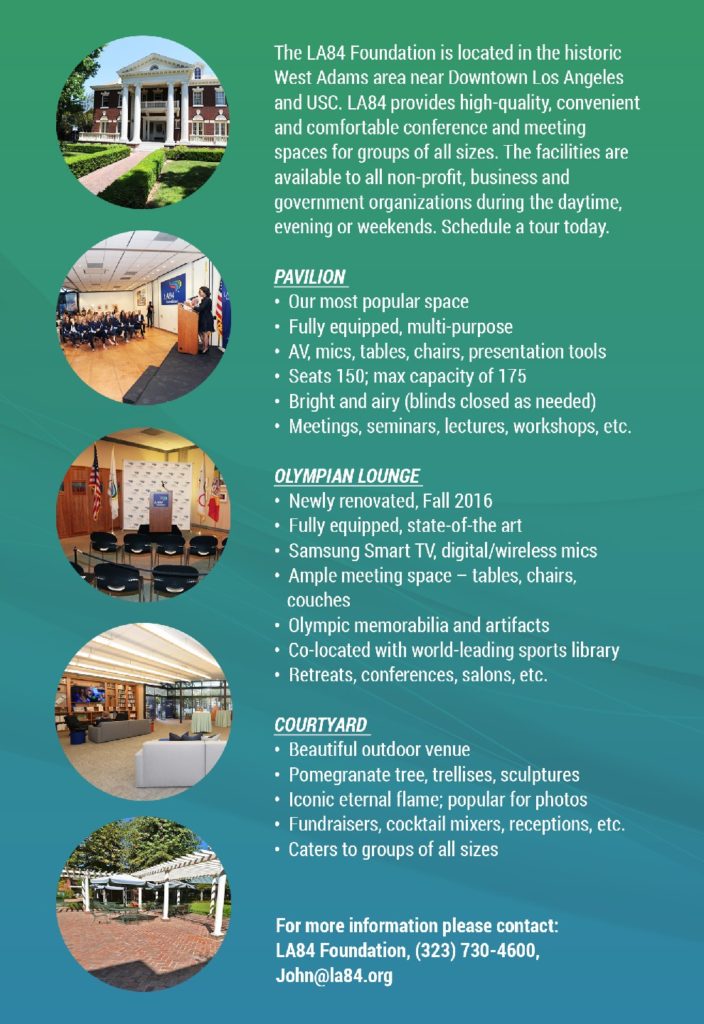SL Interview: Director Josh Greenbaum and His Film on Youth Golf
 How young is too young for competitive sports?
How young is too young for competitive sports?
That is one of the many intriguing questions that director Josh Greenbaum addresses in the course of “The Short Game,” a feature-length documentary that chronicles the lives of eight elite youth golfers as they compete at the U.S. Kids Golf World Championship in Pinehurst, N.C. The annual three-day tournament is considered to be the largest in the world for players 12-and-under; the film focuses on the action before and during the 2012 tournament.
The eight subjects in the film are youngsters from South Africa, France, China, the Philippines, and the United States. All of them are either 7 or 8 years old. Interspersed with footage from the tourney and interviews with the children and their parents are interviews with golfing legends: Jack Nicklaus, Gary Player, Chi Chi Rodriguez and Annika Sorenstam.
The result is a fast-paced film that is funny and affecting. It is also a film that will serve as a cautionary tale for parents, coaches and children alike — especially those who would dare to follow in the footsteps of Tiger Woods and Michelle Wie.
“The Short Game” is Greenbaum’s first effort as a director of feature-length documentary films. He grew up in Saratoga Springs, N.Y., and attended Cornell University (with a year abroad at Oxford University). He worked at a TV station in Park City, Utah, where he directed an hour-long documentary about a 100-mile mountain-bike race in the Wasatch Mountains, before attending the graduate film program at the University of Southern California. He and his wife are the parents of 15-month-old twin girls.
Behind Greenbaum on “The Short Game” is an experienced Hollywood brain-trust that includes executive producer David Frankel (director of “The Devil Wears Prada”), music composer Mark Mothersbaugh (founder-lead singer of DEVO), executive producer John Battsek (producer of “One Day in September,” which won the Academy Award for Best Documentary in 2000), and executive producer Justin Timberlake (singer-actor-erstwhile golfer).
“The Short Game” has made the festival rounds — it won audience awards at the SXSW and Maui film festivals — and recently enjoyed a brief theatrical run. It premieres via Netflix in December.
SportsLetter spoke to Greenbaum recently from his home in Southern California.
–David Davis
SportsLetter: How did you come to this story?
Josh Greenbaum: The story came to me via the producer of the film, Rafael Marmor. He and I went to college together, and we were always trying to find a project to work on. He had been approached by David Frankel, who directed “Devil Wears Prada” and “Marley & Me,” among others. David has kids — twins, a boy and a girl — who have been playing on the junior golf circuit for quite some time. He thought that this was an interesting world that no one had done anything about.
Not being a huge golfer, my initial reaction was, I’m interested, but I’m not sold on it yet. There’s been some wonderful docs done about 12- and 13-year-olds – like “Spellbound,” about the national spelling bee, and “Racing Dreams,” which is a phenomenal documentary about the go-kart racing circuit.
It wasn’t until I discovered that there are 6 year olds involved in the golf tournament that I got hooked. I love kids at that age. I find them really, really funny yet, if you pay attention to them, quite wise in the way they live their lives. It’s the last time before kids start becoming incredibly self-aware and censoring what they think and how they feel. It’s really a pure age.
Also, I’m a big fan of that old TV show “The Kids Say the Darndest Things.” I instantly thought, “Man, this will be funny.” There is a lot to laugh at, and with, when your subjects are golf and 6- and 7-year-old kids.
SL: I was wondering why you chose to follow kids at that age. I’m not sure there’s been a documentary about that age group connected to youth sports.
JG: There’s the incredible documentary about 7-year-old schoolchildren in London, “7 Up” [directed by Michael Apted], but other than that I haven’t seen a film about that age group. Regardless of what sport it was, I was really excited to dive into this subject. That’s not to say that the golf side wasn’t important, because once you put those two together, it’s all the more incredible because anyone who’s played the game knows just how difficult it is in terms of the hand-eye coordination. On top of that, the mental side of golf is so taxing and difficult. To find kids who are playing below par and yet have trouble signing their names on the scorecard or tying their shoes before the round was exciting to me. The interesting dichotomy between those two things was a big reason why I chose the youngest kids.
SL: What films, documentary or otherwise, influenced you with “The Short Game”?
JG: I mentioned two of them: “Spellbound” [directed by Jeffrey Blitz] and “7 Up.” With “Spellbound,” what they did structurally really opened the door for me with this project. As a screenwriter there’s a set structure: you have act one, your long act two, and then you have your finale act three. With “Spellbound,” they spent the entire first half of the film meeting the kids — and there were eight of them, too. It wasn’t until the mid-point of the movie that everyone went to Washington, D.C. to compete in the spelling bee. By then you care about who the characters are. You’re invested in who these kids are — and it doesn’t matter what they’re doing or what they’re competing in.
Another film that influenced me, oddly enough, was “Best in Show” [the “mockumentary” directed by Christopher Guest]. It has a similar structure [to “Spellbound”] in that during the first half of the film you’re meeting all the contestants. I think that when you start watching “Best in Show,” you think the filmmaker is laughing at and making fun of these characters who are into dogs and dog shows. By the end of it, you’re completely rooting for certain dogs and contestants. That comes out of a specific respect and passion for a world that seems odd at first or is misunderstood.
SL: Why did you decide to follow so many golfers — eight of them — in the film?
JG: There were a couple of reasons why we went for such a high number in “The Short Game.” Once I decided that I was going to follow the 6-year-olds — who became 7 and 8 by the time the film is finished — my instinct was, I’m not going to get a half-hour, 40 minutes, of real deep content with a 6-year-old. I potentially could have, but I felt like I might be able to get more variety, and say more about their world and more about this age, by looking at more kids than less.
Ultimately, when we filmed the 2012 tournament, we decided to follow nine kids. It wasn’t until the editing room that we pulled one kid, Sam Williams, out of the film. But he’s going to have a wonderful piece for the DVD extra because his story is so incredible. He’s from the U.K., from this little town out by Wales. There’s nothing there but sheep. He learned the game from watching Adam Sandler’s “Happy Gilmore.” His first times golfing, he would start 15 yards behind the tee, run up to the ball, and hit it.
SL: You profile four American kids and four foreign kids in the film. How much did the geographic side play a part in that?
JG: One of the things we wanted to do was to get a global perspective because something like 1,500 kids from 54 different countries come to Pinehurst every year. It would be difficult to feel like I was being representative of the subject matter if I was just following, say, one or two Americans and one kid from another country. So that was certainly a big motivating factor, but it wasn’t ever going to be forced. I would have loved to have met someone from South America. It would have been cool to follow a kid who plays golf in North Dakota, who can only play for a brief period of the year because of the weather.
At the end of the day, your character and what’s inside you mattered more than the trappings of where you’re from and where you live. It’s whose story you feel is most intriguing because the film isn’t just about who’s the best little-kid golfer in the world. Like with Kuang Yang from China. No one in his family plays golf. He has no lineage. It’s not like he came from a golf-rich family or even a golf-rich culture. Unlike Japan and South Korea, golf in China is very, very young. But his story was great: he begged his parents to buy him a DVD in a store because he thought it was a cartoon. Turns out, it was an instructional DVD with [golfer-turned-TV-analyst] Roger Maltbie dubbed in Chinese. The kid is now one of the best young golfers in the world.
SL: Did you feel that the kids were having fun playing golf, despite all the competitive pressure?
JG: What I found is that the kids were genuinely passionate about playing golf. I don’t think it’s surprising because, when you’re good at something, you love it. You get positive reinforcement all the time. That’s what’s happening with these kids, at least the ones we followed.
I’m sure their parents pushed them into it because what 5- or 6-year-old knows to go play golf? But after that, you can’t make a kid play golf five or six hours a day. You can’t make them really good if they don’t like it. You only need to be around a 6- or 7-year-old for a day to know that they kinda do what they want to do. They’ll listen to you so much, but if they don’t want to do something, they’re not going to.
Certainly, there’s parents out there who are pushing too hard and are getting too invested. You saw that in the film. But on the whole, it’s a wonderful outlet for kids. They get to exercise and be active, and they make all these friendships through golf. One of my favorite things in the film was watching Zama [Nxasana] became best friends with Augustin [Valery]. The entire time, not only did they not speak the same language — Augustin speaking French and Zama English, being from South Africa — but Zama thought Augustin was a girl. But it didn’t matter. They became buddies, and they’re still email pen pals.
SL: With some of the kids playing up to five hours a day, did you feel that golf was too big a part of their lives?
JG: Hopefully, I present what’s there and then leave it for others to decide if it’s too much or too little. I don’t mean that as a copout. I think people come to the youth sports world with a lot of judgment. I genuinely tried my best to not judge and to just go in there and meet everyone and hear from their perspective what golf means for them.
What I can speak to is, every kid we followed goes to a normal school. They have a normal school day. They have a normal life other than the fact that they play a massive amount of golf. Most of them also did a lot of other things. Allan played four sports. Alexa played three or four sports. Sky did cheerleading and was in chorus. At some point in their lives, they all chose to concentrate on golf.
I remember asking Alexa, “When did you decide that golf was your thing?” She knew right away. She said, “I had a softball game, basketball practice and a golf tournament all in one day. I had to make a decision because I couldn’t be in three places at once. I thought about it, and that’s the day that I decided golf was my thing.”
Look, every kid’s different. Every parent parents differently. So, who knows? I think if you want to raise a person to be successful at something — be it golf or another sport or playing an instrument — the truth is you really do have to put in the time. It’s that 10,000 hours [of practice] rule that [“Outliers” author] Malcolm Gladwell wrote about: The sooner you get to that 10,000 hours, the sooner you are to being an expert at it.
SL: Did you feel comfortable asking the kids questions about their lives off the course?
JG: I learned I could ask these kids much bigger questions than I initially anticipated — about life, about competition, about relationships, about all those big things we think about as adults. I asked all of them, “Do you feel like you’re giving your childhood up?” That’s a pretty heavy question to ask a 6- or 7-year-old. A lot of them didn’t hesitate. Allan said, “I don’t. My childhood is golf and I love it, so I don’t feel that I’m giving that up.”
I’m sure there are detractors who will say, “They’re too young to know what it means to give up their childhood.” I think it’s fair to say, maybe they don’t know. Maybe in ten years they’ll have a different answer.
SL: I had never heard the phrase “daddy caddie” before, and that underlines the fact that parents play a huge role in youth golf. What was it like when one of the parents in the film, Andre Avery, lost his cool while caddying for his daughter Amari?
JG: When Andre had his meltdown on day three of the tournament, that was very difficult. One of the things I respected about him was that he really didn’t change himself because there was a camera on him. He didn’t say, “Now, I’m going to be a different guy.” He was very much himself, for better or worse.
What was so interesting to me was that, when they weren’t on the course, they had a phenomenal relationship. He was a sweet, loving dad. He braided her hair every day before school, and she teased him all the time. But on the course it was toxic.
We’ve had a lot of talks since the movie’s come out, and he’s talked at length about how much he’s grown and changed for having been a part of the film. He no longer caddies for her because he realized that that was way too intense of a relationship. Now she’s playing great. She’s out there caddying for herself. She’s learning at a very young age what club to use, how to read greens and all that stuff.
SL: In the film, Andre was candid about the fact that he was pushing his daughter to be the next Tiger Woods. Isn’t that a lot of pressure to put on a child?
JG: When you boil it down, it’s universal. We all want our kids to have a better life than we have. We want them to be successful at whatever they do. But the tradeoff is that it can create a lot of pressure, both on yourself and on the kid. That’s what happened on day three, I think. This wasn’t about missing a putt. This wasn’t even about the tournament. This was about something much bigger — this grand plan he has for her future.
You can say, “Look, golf is not the only path.” Which is true — it’s not the only path. But the reality is, with the financial means that the family has and with the background that they have, it is somewhat true. Should it all pan out, this is a girl who might wind up at a school like Stanford with a scholarship [to play golf]. She never would have had a shot at that, with parents who could never afford to do that.
One of the more powerful moments in the film is when we filmed Andre at his work [in Riverside, California] one day, and he said, “We’re ‘C’ people. How do you make an ‘A’ person out of a ‘C’ parent?” It was pretty intense. He just said it. He didn’t censor himself.
SL: What most surprised you during the making of the film?
JG: I was really surprised by the wisdom these kids have. My fear in the back of my head making the film was, are they too young? Did I make a mistake and chose subjects who are just too young to have anything to say. They not only had something to say, but they taught me a couple of things just by the way they played the game. One is, they have a short memory. They have a bad shot, and they just go onto the next one. They put it out of their mind. It’s the same thing when they have a really good shot. All they do is focus on the next shot.
I think that’s a result of their age because they really do have a short memory, literally. When kids are that age, they bang their head, they cry, and the next second they’re running around doing something else. But they also train themselves to do that, and I think there’s a lot of power that can come from that. I mean, if I have a bad tee shot off the first hole, I’m like, well, there goes the round. Game over.
Another thing that I watched, over and over, was that the kids only see where they want to go. When they step up to the tee box, they see the flag — and that’s all they see. That’s what they’re going at, and they go very confidently. They don’t see the bunker. They don’t see the trees. They don’t see the water hazard in front of them. I think, as we get older, all we see are the obstacles in the way of where we want to go.
And so, when you watch how these kids play, you realize there’s such power in that approach to life, to the game. You hear sports psychologists often tell athletes to play like a kid and think like a kid because they’ve got it right in many ways. That approach is relevant in anything, not just golf.
SL: Would you like to revisit this story, say, seven or ten years from now and see what happened to these kids?
JG: I think it would be fascinating to do that. That’s why the “Up” series to me is one of the most fascinating documentary films — if you consider all of them as one piece — because it’s so interesting to see what transpired over time, over seven or eight films, to all the characters. I mean, how do you get the people who aren’t where they were hoping they would be to be a part of that film?
I’ve been asked, which of the kids do you think is going to make it [as a pro golfer]? It’s really hard to say. I genuinely believe that every kid we followed has the potential, but you’re dealing with so many variables. Life comes along, and a million things happen that you really don’t have control over. How will they deal with failure, of course, but also how will they deal with success?
It’ll be very interesting to see where all these kids end up. I hope whatever they’re doing that they’re happy. They became my little brothers and sisters throughout the making the film, so obviously I hope for the best for them.
SL: What’s next for you?
JG: I just directed my first network TV show, an episode for the ABC show called “The Neighbors.” Next up is a show that I created about sports mascots for Hulu — a ten-episode docu-series called “Behind the Mask.” The show follows the lives, both inside and outside of the suit, of four sports mascots: a high-schooler, a college guy, minor league hockey in the AHL, and a professional in the NBA. That will air on October 29.




